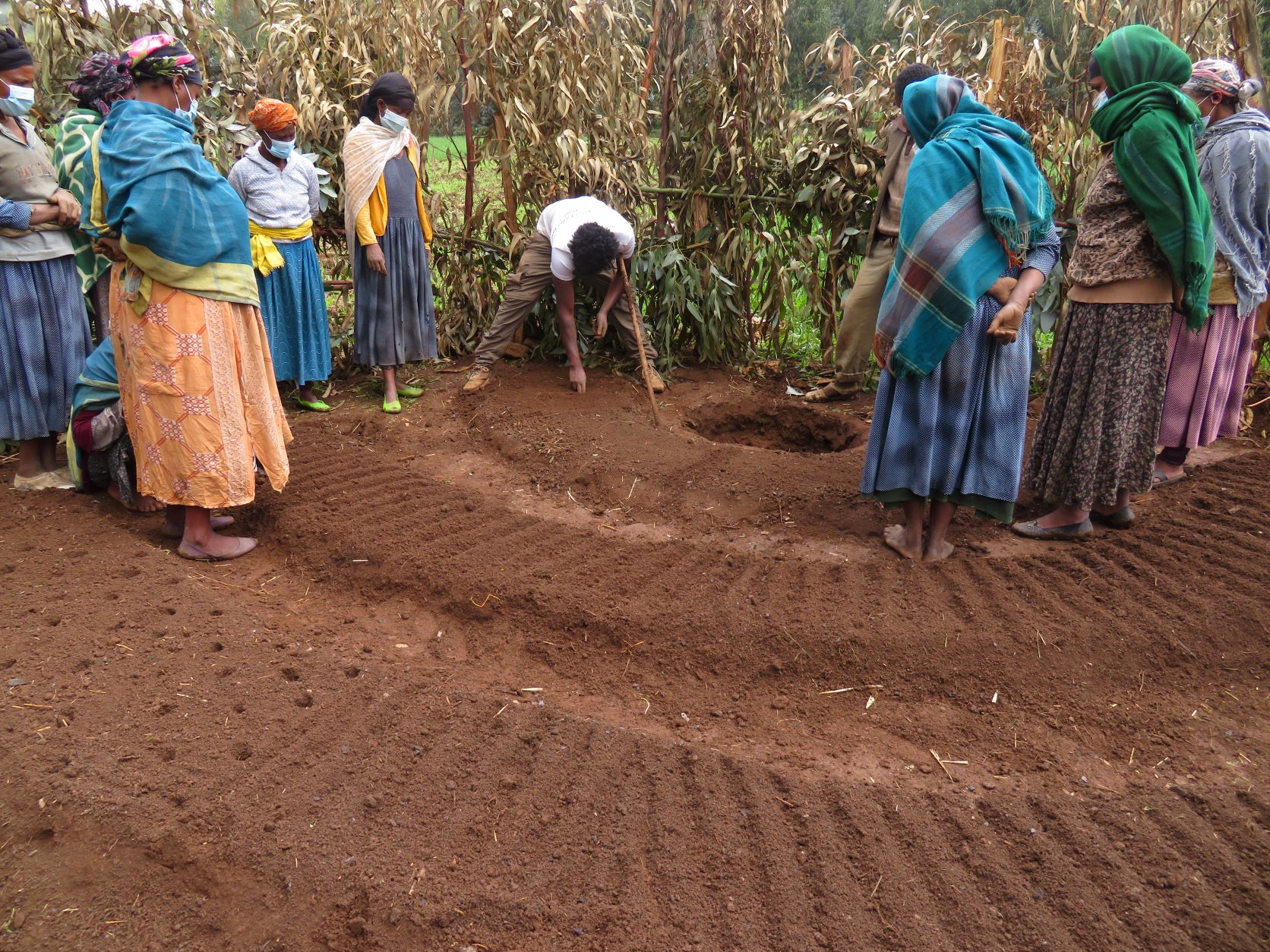Improved household nutrition and livelihood resilience through permagardening
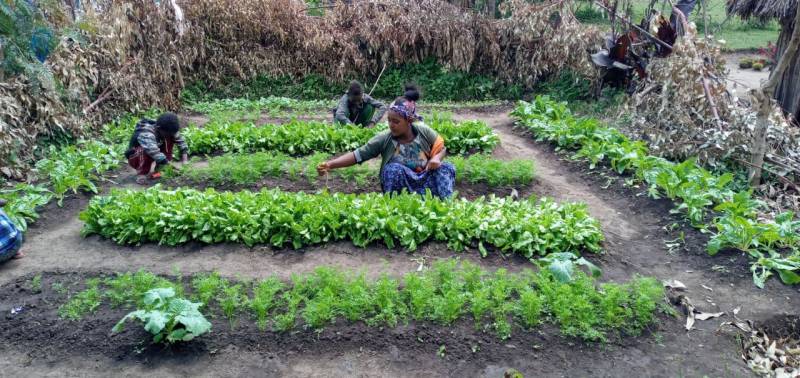
Background
Homesteads have been shown to have a high potential for improving the quality and quantity of household food supply and nutrition, diversifying income and employment, advancing women's status, improving water and waste management, and contributing to ecosystem services. Home gardens, on the other hand, are a relatively underutilized agricultural production niche in Ethiopia. In the same way that rain-fed agriculture produces the vast majority of crops in the country, most homegardens grow crops during the rainy season and remain vacant during the dry season.
Permagardening can help to solve this problem by designing gardens in such a way that rain water can be captured and stored, allowing gardening and food production to be done year round. By using this approach, high-quality food can be grown on a continual basis in homesteads that are often considered women's territory, with little skill, capital outlay, and the use of locally available resources. Women can easily manage their crops while teaching life skills to their children due to the gardens’ proximity to homes.
What is permagardening?
Permagarden is a small-scale permanent garden established around homes to provide diverse diets for families year-round. The permagarden approach combines the best practices of permaculture (permanent agriculture) and bio-intensive agriculture models, with the former focusing on design principles for using natural systems for production and the latter on maximizing soil and plant health and increasing biodiversity through sustainable practices for maximum yield.
Practical training on permagarden establishment at Lay Gayint woreda, Ethiopia
Designing a Permanent Garden: Steps and Processes
The Permagarden's design allows for the efficient capture and retention of scarce moisture while also allowing for the safe and easy removal of excess water via a 5S process (Stop - Slow - Sink - Spread - Save). Swales, holes, and their corresponding berms work to stop and slow the water down, allowing it to sink and spread slowly through the soil profile, where it is then readily absorbed and saved within the beds.
The major steps in creating a permagarden are (1) choosing and mapping the garden location and assessing resources, (2) preparing the planting area- preferably 4mx4m as a starting point, (3) establishing water control Berms: a 30 cm deep x 30 cm wide swale (ditch) is dug across the "top" of the slope against the main flow of runoff to stop and redirect the water; 50 cm wide and deep holes are dug on either end to catch excess runoff; and one-meter-wide beds with 40 cm pathways are marked off within the space created by the berms, (4) planting perennial leafy greens and grasses along the top and sides of the berms to protect the swales and holes, (5) double digging and planting the meter-wide beds, (6) planting "Guilds" below and around each water retention hole to maximize space while also protecting and providing food, and (7) Planting "live" fence truncheons for additional security and wind protection.
SAA’s permagarden interventions
Permagardening has been promoted by a number of non-profit organizations in Ethiopia, with the majority of them reporting positive results. As part of its efforts to promote nutrition-sensitive agricultural practices in Ethiopia, the Sasakawa Africa Association has recently begun promoting permagardening for vegetable production in homesteads. Permagardening has thus been demonstrated in seven districts (woredas) and nine Farmer Associations (kebeles) in 2020. Some 273 (176 F) beneficiaries received capacity-building training in permagardening, including 205 farmers (160 F), 49 DAs (14 F), and 19 SMSs (2 F). Following that, trained farmers established permagardens and planted a variety of vegetables, including swiss chard, carrots, lettuce, beet-root, head cabbage, and Ethiopian kale (Gurage Gomen).
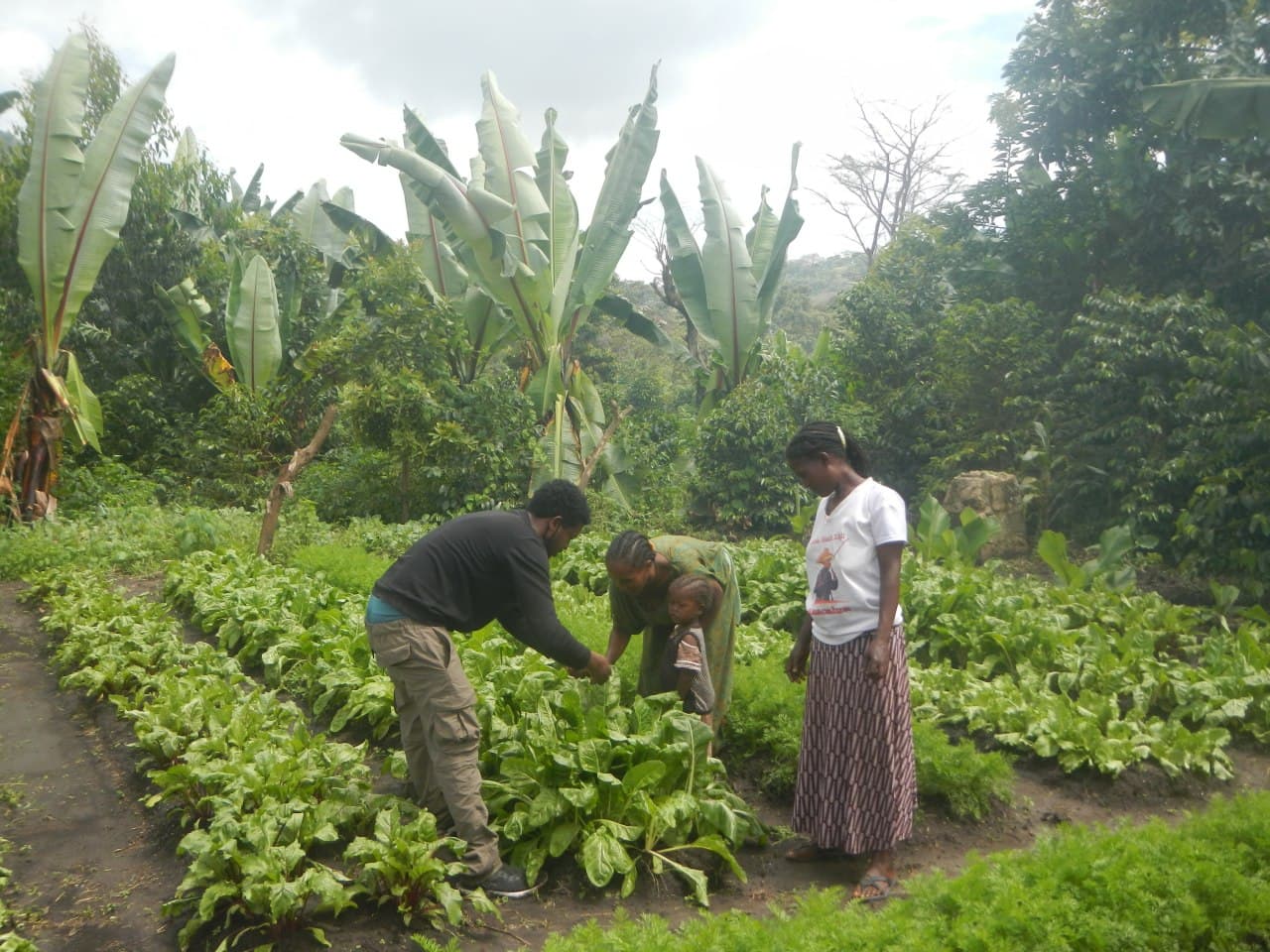
Technical support to a permagarden host woman in Adola Rede woreda, Oromia Region
Preliminary observations
Early results indicate that permagardening improves smallholder farmers' nutritional status and income, particularly for women, while also increasing their capacity for climate change adaptation and resilience.
Farmers and extension agents testified that permagardening technology enabled them to grow more vegetables on smaller plots of land for a longer period of time than traditional vegetable gardens. Obviously, the increased and prolonged harvest was made possible because of the soil's improved water holding capacity and fertility.
Farmers who practiced permagardening earned an average of 1,280.00 Birr ($30USD) from the sale of vegetables in Ana-sora woreda, with earnings ranging from 800.00 Birr ($19USD) to 2,200.00 Birr ($51USD). Furthermore, because of the extended harvest, they were able to consume vegetables for up to 8 months while saving 50 to 100 Birr per week on vegetable purchases.
Challenges
The permagarden establishment, on the other hand, was reported to be labor-intensive. This, however, is a transient problem that will be encountered at the beginning and will not necessitate much labor once the gardens are well established and mature. This problem can be solved using traditional community seasonal labor constraint-releasing mechanisms such as labor pooling and collaboratively working on rotational turns.
On the other hand, while water conservation activities may ensure adequate moisture in the medium term, access to water during the early years of establishment for year-round production appears to be a problem. This problem can be solved by collecting roof rainwater during the rainy season and using it for supplemental irrigation during the dry season.
Remarks and suggestions
Overall, permagardening enables household members to produce diverse and nutritious food year-round from small plots in their homesteads using local resources. Farmers can increase their income, food and nutrition security, and build capacities to withstand and adapt to shocks and stresses, resulting in a resilient livelihood.
Furthermore, apart from improving the nutritional status of households through diet diversification, permagardening can also contribute to achieving the three key goals of regenerative and sustainable agriculture: Ecological- improving natural resources and ecosystems through improved water conservation, use of local waste materials to improve soil fertility, reducing erosion, and increasing biodiversity. Economic- raises household income by lowering input costs, diversifying and intensifying production; and Social- improves farming households' skills, capacity, confidence, and co-learning while also empowering women.
Thus, permagardening must be given adequate attention and promoted as a key practice to assist SAA in implementing its new strategy, which is centered on regenerative, sustainable, nutrition-sensitive, and market-oriented agriculture.[i]
END
Article develped by Melese Liyehe, Lulu Taye, Tewedros Abate and Fentahun Mengistu (SAA-Ethiopia team)
[i] Note: We drew background information for this article from the "Permagarden Technical Manual" published by the Technical and Operational Performance Support (TOPS) Program (2015).
SAA Publications
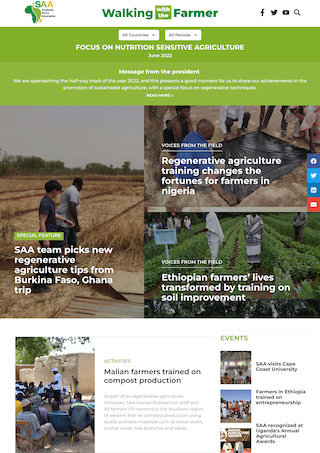
E-newsletter
"Walking with the Farmer"
SAA publishes a bimonthly e-newsletter reporting on SAA activities.
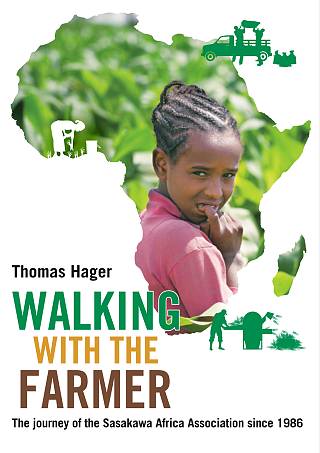
SAA history book
"Walking with the Farmer: The journey of the Sasakawa Africa Assoication since 1986"
This book chronicles the history of SAA from its inception to the present.
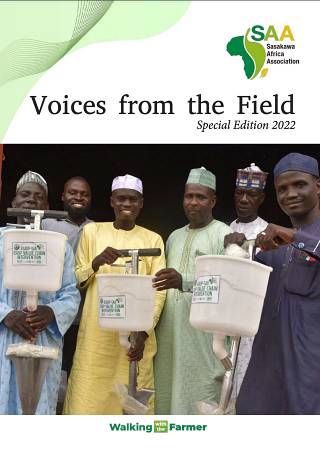
Success stories
Voices from the Field Special Edition 2022
This is a special edition of the "Voices from the Field" articles.
